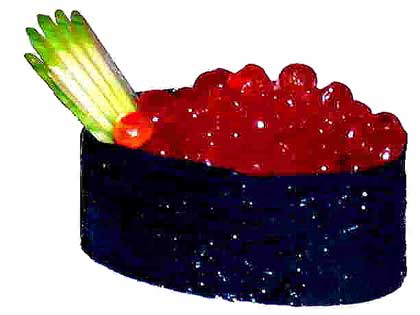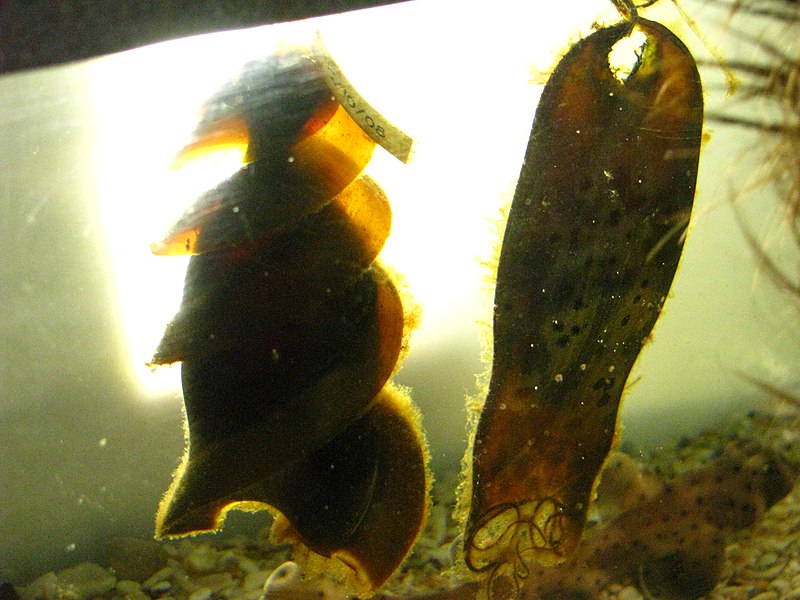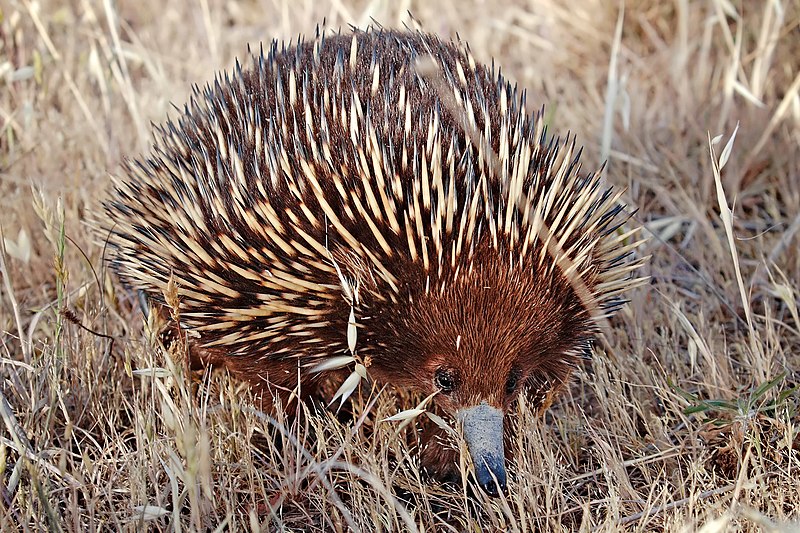Normally the basis of these blog posts come from questions stemming from something we have seen or heard. This one came while we were eating, so we're now using a bunch of senses to figure things out and I answer questions about our dinner. Beans and Bunny love sushi. LOVE. Bunny can plow through salmon sashimi like nobody's business! But what Beans is really partial to is "fishy balls". I know what you are thinking - "but fish don't have..." I'll stop you there, what she really means is salmon roe sushi (Ikura if you happen to want to order it). A pile of squooshy fish eggs on rice, which amazingly she eats one by one with chopsticks.
 |
| Beans' coveted "fishy balls" |
We've already talked a bit about eggs previously in reference to Beans' class hatching chicks in an incubator and their general breakfast and baking capabilities. But why aren't fish eggs aren't like chicken eggs? Where is the shell? AM I EATING THE SHELL?
Eggs are a pretty common thing in the world of reproducing things. Everything from insects to mammals pretty much uses an egg in some form. I mean there's a few other ways of reproducing, but eggs are by far the most common.
 |
| EGGSTRAVAGANZA! |
In placental mammals (like us) they stay internal, which you can tell because well, we don't lay eggs. There's some fish and reptiles that have live young as well, and then there's a whole in between kind of internal egg but not placental thing we won't get into because we aren't doing reproductive strategies. So, for the most part, in birds, insects, fish, reptiles, amphibians, monotremes, molluscs.... you get the idea... they are external. They lay eggs, which then either hatch into offspring or get eaten, with or without rice and nori.
The key parts to have in an egg are protection (some kind of shell) and a food source for the growing chick (yolk). And obviously some parental genetic material if your goal is to get some sort of creature out of it. The eggs we eat are for the most part unfertilized, so although the female genetic material is in there it never develops which is thankfully why there are not partially developed chicks in your omelette.
There are three main kinds of eggs. Don't be scared by their titles - just think of it in this way: lecithal means "has a yolk" and the prefixes are just the size - small, medium and large. Like at Starbucks where they also name them arbitrary things and then look at you condescendingly because you can't for the life of you remember which one means medium and you really just want your soy chai latte.
Microlecithal
Small eggs with a small yolk. Usually laid in really high numbers as a reproductive strategy. This type of egg is used by things like clams, oysters, mussels, worms, sea stars, crabs, insects, butterflies... you get the idea. These usually hatch as a larva and finish developing outside the egg.
Mesolecithal
Medium yolk. This means there can be a longer development period and some animals hatch fully formed instead of as a larva like hagfish and snails. Some still go through that extra stage though - like salamanders and lampreys.
Macrolecithal
Eggs with a large yolk. The eggs are usually fewer in number and have enough food to get them through development. This is the one that vertebrates use, and also octopus, 'cause they are awesome like that. These are what we think of as eggs and are laid by birds, fish and reptiles.
 |
| Shark Eggs. That's right. SHARKS. Even their eggs are cool. |
In placental mammals (like us) there is essentially no yolk and there is basically a naked egg cell. We can get away with this because nourishment is provided by the mother throughout development.
So, if birds and fish are both macrolecithal then how are they so different?
All birds have the same egg structure - shell, some membranes, albumen (egg white), a yolk and some cool twisty bits (chalazae) that hold everything in place. The "blastodisc" (also called a germinal disc) is the part that would, if fertilized, start making a bird - and not some sort of nerf weapon, although it totally sounds like one. Every bird does theirs in their own special way - they come in a myriad of shapes, sizes, colours and textures. Some are even water-resistant!
 |
| Egg parts! |
Fish eggs have generally the same parts, only the egg "shell" is a different substance and more of a membrane, which can be fairly tough depending on species. Fish eggs are soft until they are laid and then harden when they hit the water, but they never develop a calcium based shell like a bird. So yes, technically we are eating the shell of salmon eggs.
 |
Amphibian eggs work much the same as fish - not surprisingly as they are both usually aquatic (although there are a few land-egg amphibians out there). The lack of a hardened shell means they all have to stay wet - either by water, a gelatinous goo or both.
 |
| http://courses.bio.indiana.edu/L104-Bonner/Sp10/imagesSp10/L6/fishNfrog.jpg |
 |
| Frogspawn |
Reptiles are similar in structure to birds - they too have a shell, it's just usually leathery. Shells like this that form before laying are found in species that internally fertilize (otherwise fertilization would be really hard). The super cool thing about some reptile species (turtles and crocodiles mostly) is that the sex of the young is temperature dependent. Like in turtles - the colder eggs mean more males, females dominate for warm eggs.
 |
| I don't want to hatch, I'm cozy! |
And no egg discussion would be complete without the awesomest of all egg layers - monotremes. I really should have put egg pictures but I can't resist a platypus face.
 |
| Platypus! http://animals.nationalgeographic.com/animals/mammals/platypus/ |
Not only are they wacky (and I mean that in the nicest way possible) they are the only mammals in the world to lay eggs. And of course they are in that mecca of all wacky animals - Australia. They do things a little differently though, the egg develops internally first and then outside for less time. In comparison - a Ring-billed Gull will have her egg for a day before laying, then incubate on the nest for 3-4 weeks. A platypus will hold their little round white eggs internally for about 4 weeks and then incubate for 10 days. Echidnas tuck theirs in a pouch for 10 days before hatch (different than a marsupial which tucks their baby in a pouch). It's a lot like a reptile egg - soft shelled. In looking this up I learned two really important un-egg-related things though - baby Echidnas are called "puggles" and male Platypuses have poisonous hind spurs.
The only part of our egg discussion I wasn't able to answer in full was why we don't eat all the eggs and just stick to birds and fish. I'm not sure if there are people out there that eat frog or alligator eggs (I would suppose there are) but we don't. My guess would be that it has to do with the ease of harvest - catching a salmon full of roe is easy in comparison to getting an alligator egg. I know which I'd rather do!
It may be hard for an egg to turn into a bird:
it would be a jolly sight harder for it to learn to fly while remaining an egg.
it would be a jolly sight harder for it to learn to fly while remaining an egg.
-C.S. Lewis

No comments:
Post a Comment